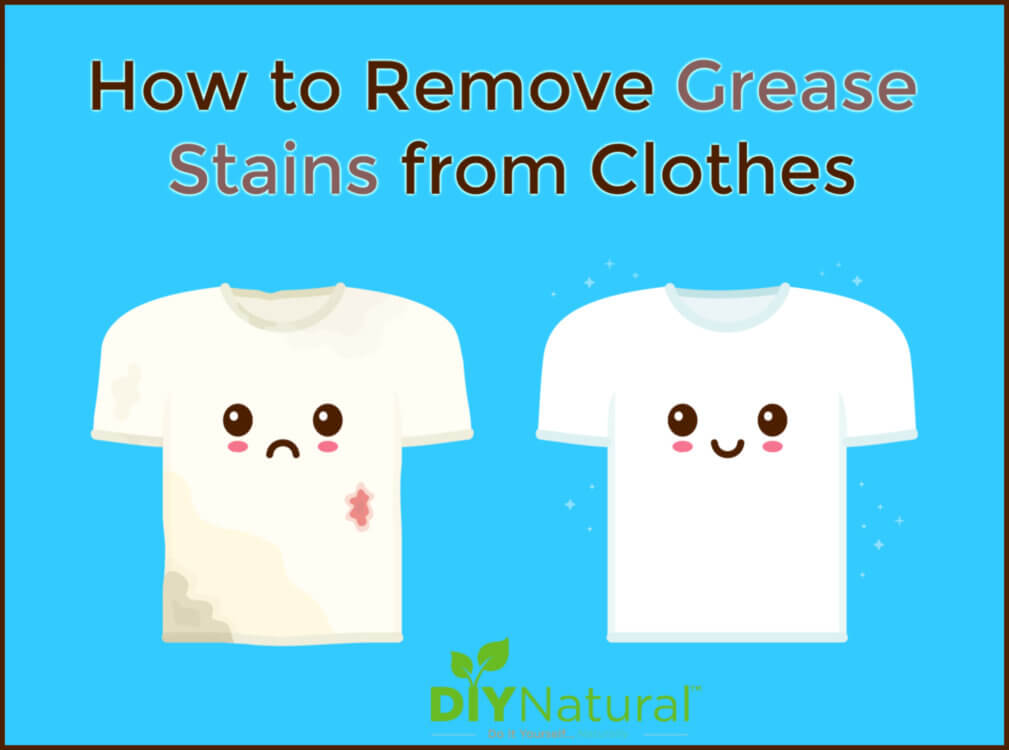How to Remove Grease Stains From Clothes – Wondering how to remove grease stains? What about how to remove grease stains from cotton specifically? Once the grease hits your clothing, you may be tempted to consider it a lost cause, but it’s not! There is a way to get rid of grease stains (you can even try it if they’re already set, but it’s best if they’re fresh).
Why Does Grease Cling to Clothing and Refuse to Come Out?
Because grease is a lipid and insoluble in water, it’s more difficult to get out than most other stains. An average laundry cycle won’t do the trick because grease grabs onto the fibers of the fabric. The answer – concentrated attention in the form of a pre-treatment (don’t worry, it’s not complicated or expensive)!
In this case, the baking soda draws the stain out and away from the fabric and the liquid dish soap breaks up what remains. Surfactants in the dish soap are the key when you need to remove grease stains. These affect the hydrogen bonds in the water in a way that allows it to cut through the grease stains and wash them right out.
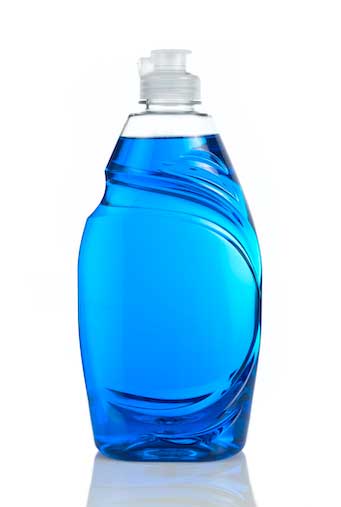
1. Removing Grease Stains with Dish Detergent
Let’s start off with using dish detergent to get rid of the stain. After all, it’s designed to get rid of grease on pots and pans, but it’s also safe to use on clothes. Here’s what you’ll have to do:
Materials:
• Old towl or cardboard
• Dish detergent
• Soft cloth
Steps:
1. Lay your clothing flat.
2. Place an old towel or cardboard under the stain.
3. Apply a small amount of dish detergent to the grease stain.
4. Rub the detergent gently with a soft cloth to saturate the stain.
5. Let the detergent sit for around 5 minutes.
6. Wash and dry the clothes according to the clothing label directions.
7. Watch this video to see how it’s done:
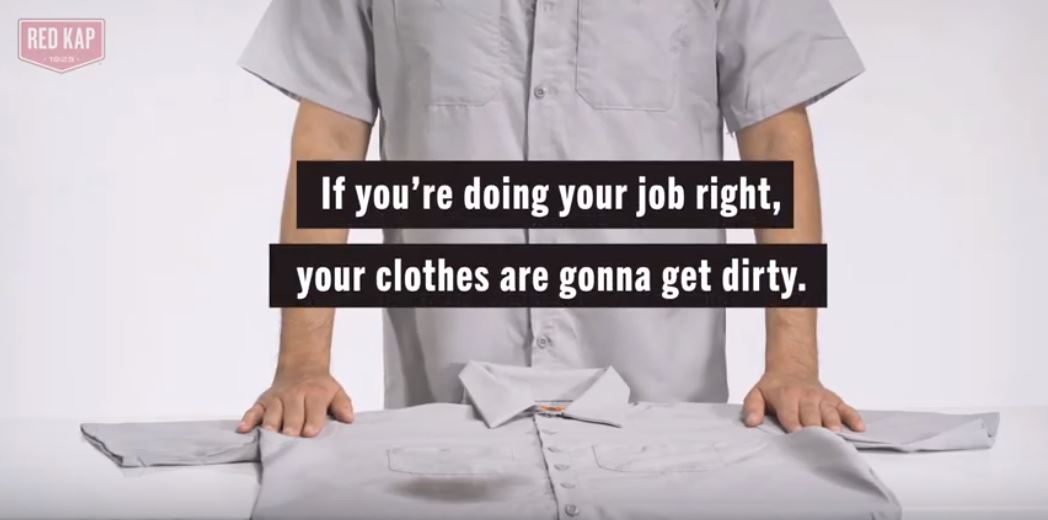
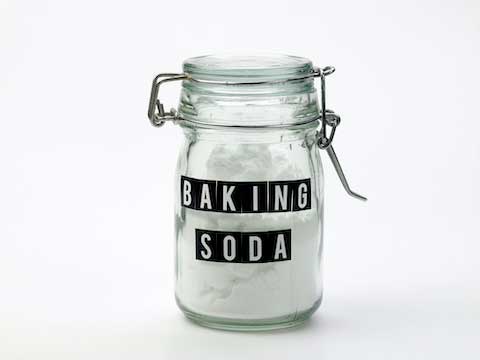
2. Removing Grease Stains with Baking Soda
Baking soda works well on stains that have yet to set or be run through the washer. Baking soda can be used to draw the grease stain out and away from fabric. Here’s how to do it:
Materials:
• Old towel or cardboard
• Baking soda
• Scraping tool (anything dull and rigid)
• Hot water
Steps:
1. Lay your clothing flat.
2. Place an old towel or cardboard under the stain.
3. Sprinkle baking soda on top of the grease.
4. Let the baking soda set for about 10 minutes while watching for it to change color as it soaks up the stain.
5. Scrape off the baking soda.
6. Wash clothing with hot water.
7. Repeat steps 3-5 until the baking soda does not change color.
8. Dry according to your clothing’s label.
If the stain persists, add liquid dish detergent to the stain and then more baking soda. Scrub the stain with a toothbrush before letting the mixture set for about 10 minutes. Repeat Step 6 when finished.
3. Removing Grease Stains with Aloe Vera Gel
That soothing gel you use for sunburns can also be used for grease stains. Here’s how it’s done:
Materials:
• Hot and warm water
• Aloe Vera gel
Steps:
1. Soak the garment in hot water.
2. Remove the garment, and scrub Aloe Vera gel into the stain in a tight, circular motion.
3. Wash the garment in warm water.
4. Air dry or hang dry the garment when you use this method.
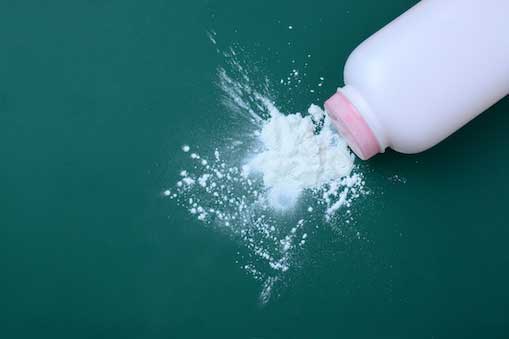
4. Removing Grease Stains with Baby Powder
This method is similar to the baking powder method. If you have baby powder on hand, put it to work to remove your fresh grease or oil stains. Here are the steps:
Materials:
• Baby powder
• Toothbrush
Steps:
1. Lay your clothing flat.
2. Sprinkle on some baby powder.
3. Let the baby powder set for about 10 minutes.
4. Brush off the baby powder with a toothbrush.
5. If the stain is still visible, put the garment in a washing machine with cold water.
6. Dry according to your clothing’s label.
5. Removing Grease Stains with Cornstarch
Cornstarch is another fine powder that can come through in a mighty way when it comes to grease stains. Here’s what to do:
Materials:
• Cornstarch
• Toothbrush, damp sponge, or rag
Steps:
1. Pour a small amount of cornstarch on the stain.
2. Let the cornstarch set for at least 15 minutes, but up to an hour or more.
3. Brush off the cornstarch using a toothbrush, damp sponge or rag. You could also leave it on the garment before washing.
4. Wash the garment in a washing machine on a cold setting.
5. Dry according to your clothing’s label.
6. Removing Grease Stains with Mechanics Soap
As a mechanic, you’ve probably used mechanics soap everyday not knowing it can clean stains as well as it can clean your skin. Little did you know, this kind of soap was actually designed to do both.
Materials:
• Old towel or cardboard
• Mechanics soap
Steps:
1. Lay your clothing flat.
2. Place an old towel or cardboard under the stain.
3. Apply the soap to the stain.
4. Allow the soap to set for 15 to 30 minutes.
5. Wash the garment in a washing machine separately, to avoid a mechanics soap smell on your entire wash load (unless you like that sort of thing).
6. Dry according to your clothing’s label.
While each method may need to be repeated to remove set-in grease, stains like these are no match for common household items and a little bit of elbow grease. Now that you know what to do, you’ll be able to go back to work in a shirt that looks as good as new without having bought an expensive stain remover to get the job done. Better yet, get a shirt with built in stain-blocking technology that keeps stains from forming in the first place.
Save Time with Oil Repellent Clothing
If there was a way to avoid the stain altogether, would you try it? OilBlok Technology, offered exclusively by Red Kap, repels some of the toughest garage liquids to keep stains from forming. Replace your old workwear with garments sporting our OilBlok Technology so your shop clothes stay looking professional and are always ready to go.
If you’re part of a crew, talk to your manager about outfiting the whole team. With OilBlok Technology, you and your fellow wrenchers can forget worrying about staining your uniform and focus on getting the job done.
Conclusion
For washable velvet items, immediately apply cornstarch or baby powder (absorbents) to the cooking oil stain. Allow the absorbent to sit on the stain for at least five minutes, then gently brush off. If the stain is small, this might be enough. If not, apply a stain pretreatment product according to the manufacturer’s instructions.
